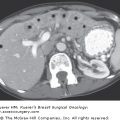For at least 2 decades, the role of breast ultrasound (US) has continued to evolve. Initially proposed to differentiate the cystic versus solid nature of indeterminate masses identified on mammogram, the indications have grown to include evaluation of palpable breast masses, pregnancy and lactation, postoperative follow-up for hematomas, seromas, prosthesis, and recurrence, evaluation of axillary lymph nodes, US-guided interventions: cyst aspiration, biopsy of solid lesions, needle localization, and most recently, screening, especially of the high-risk and/or dense breast.1
There is considerable rationale to support the concept of screening US. If one considers the impact of screening mammogram, it alone is thought to have decreased breast cancer deaths by at least 15% to 20% in women ≥40 years of age with some studies reporting substantially higher benefits.2 Unfortunately, approximately a third of screening mammograms are classified as American College of Radiology-Breast Imaging-Reporting Data System (ACR-BI-RADS) density protocol 3 to 4, defined as heterogeneously dense (51%-75% glandular) or even homogeneously dense; such results may dramatically lower the sensitivity of the mammogram.3,4 Although recent data have suggested that digital mammography improves the sensitivity in such dense breasts, this limitation is not obviated.5 Conversely, screening breast US actually has its visualization capability improved in dense breast tissue.6 Moreover, screening US is well tolerated by patients, is noninvasive, exposes the patient to no radiation, and is relatively inexpensive. When performed in the clinician’s office, it becomes a logical extension to a thorough physical breast examination.7
The origins for screening breast US go back to the late 1970s when Bailar suggested that radiation from mammography might be carcinogenic.8 This in turn led to efforts to replace mammography with US. As one might expect given the quite limited quality of US in general at the time, these initial studies yielded relatively poor results and particularly were associated with very high false positives.9,10 Not to be deterred, several studies were performed in the decade subsequent to the mid-1980s that identified patients’ breast cancers that were incidentally discovered by screening breast ultrasound.11 Part of the difficulty in comparing these studies rests with the various techniques and equipment used in performing the evaluations. Nonetheless, the results were such that the concept of screening breast US as a viable entity was gaining momentum. This was further supported by 2 large studies, the first performed by Gordon and Goldenberg on 12,706 women who were identified by having a palpable mass or a mammographic abnormality.12 In this study, use of optimal equipment and reliable technique resulted in a 0.3% detection of incidental cancers by US alone; of note, most were in women who had dense breast parenchyma. These data were substantiated in another large study by Kolb et al in which 11,220 women with negative mammograms as well as a normal clinical breast examination (3626 “dense” breasts on mammogram) underwent bilateral whole breast US.13 There were 74 cancers detected, 11 by US only (0.3%). In women viewed as “high risk,” the incidence was 6 of 1043 (0.6%).
Taking the concept of screening for incidental breast cancer a step further, 2 studies evaluated patients (by screening US) who had already been diagnosed with breast cancer.14,15 Berg and Gilbreath performed ipsilateral US only and despite a relatively small patient cohort, found a 14% incidence (9 of 64) of cancer by US alone. Moon et al performed bilateral screening breast US and identified 36 of 237 cancers (15%) by US alone; of note, 28 of these were ipsilateral and 8 were contralateral.









